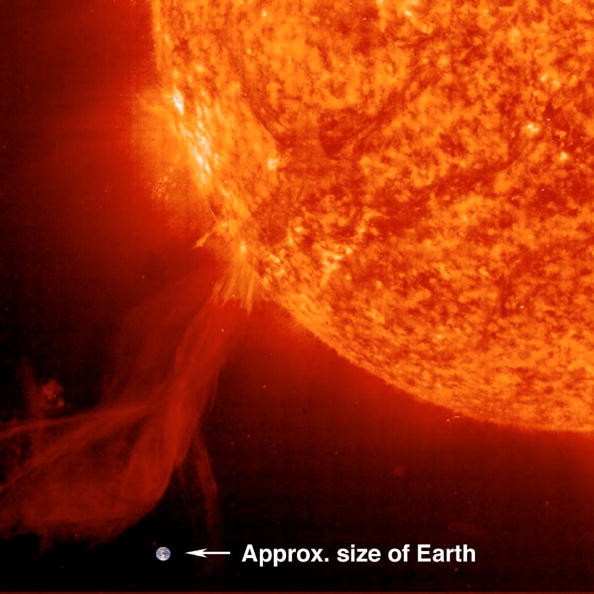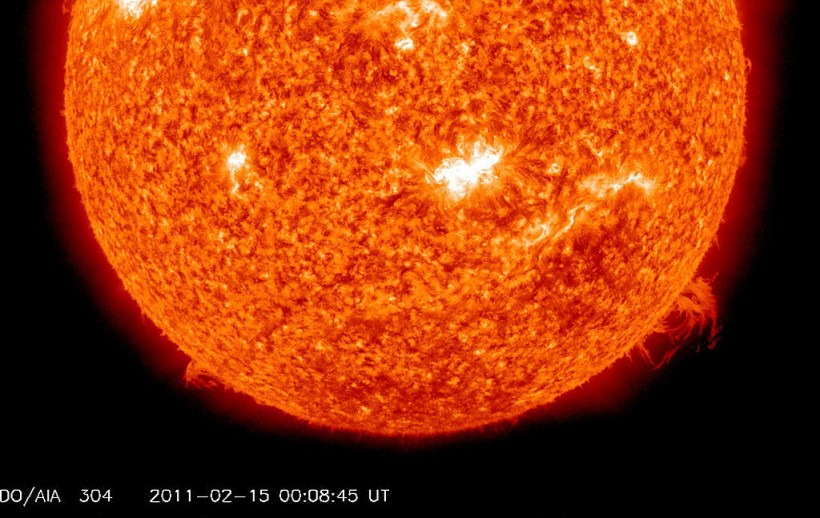Experts have warned of a possible solar storm this weekend due to the arrival of a torrent of solar winds.

A hole in the Sun's southern hemisphere has developed, sending a flood of charged particles toward Earth. NASA's Solar Dynamics Observatory (SDO) photos depict a big "coronal hole" in the Sun's outer atmosphere, known as the corona. The stream of "gaseous material" escaping this hole is expected to impact the planet between Saturday and Sunday.
Solar Winds Incoming

According to SpaceWeather.com, this could cause mild geomagnetic disturbances in the planet's magnetosphere, the region of space where Earth's magnetic field is strongest.
Solar winds are a continuous stream of plasma that flows outward from the Sun's corona.
Free-flowing electrons and protons make up the majority of the plasma.
The streams escape the corona, the Sun's outermost layer, which may reach 1.1 million degrees Celsius temperatures.
Coronal holes are thought to be the source of most solar wind emissions.
Space weather is becoming an increasingly essential part of the National Weather Service. It will continue to expand as we learn more about the Sun's physical processes and consequences on Earth and space.
Related Article: Everything You Need to Know About Solar Flares: What Does it Take to be X-Class?
What an Intense Solar Can Do

Due to the expanding number of satellites in orbit, power grids on Earth, use of Global Positioning Systems (GPS), commuter air travel, and space flight, space weather can have substantial consequences on humans on Earth and in space. For additional information about the GOES-16 weather satellite, click on the image below.
Large bursts of radiation, high-speed electrons and protons, and other very energetic particles can be expelled from the Sun and sometimes aimed at Earth in solar flares, coronal holes, and coronal mass ejections (CME's).
These particles and radiation can harm satellites in orbit, shut down electricity networks on Earth, disrupt GPS, and pose major health risks to humans traveling at high altitudes on Earth and astronauts in space.
Related Article: Powerful Solar 'Superflare' That Only Occurs Once Every 10,000 Years: Can it Happen Today?
Types of Space Storms
There are three types of space weather storms: geomagnetic storms, which are caused by CMEs and high-speed wind from coronal holes and can produce beautiful auroras while also causing problems for electrical systems, satellites, GPS, and radio systems; solar radiation storms, which are caused by both flares and CMEs and can be dangerous to astronauts and people flying at high altitudes while also causing problems for satellites and radio systems; and radio blitzes, which are caused by
SWPC
As a result, the Space Weather Prediction Center (SWPC) in Boulder, Colorado, publishes daily space weather forecasts and cautions people concerned about these consequences.
Also Read: Expert Warns 'Situation Worse than Covid' if Government Ignores Solar Flare Defense
For more cosmic news, don't forget to follow Nature World News!
© 2024 NatureWorldNews.com All rights reserved. Do not reproduce without permission.
![Severe Weather Threat to Impact Over 40 Million Americans Across Central US [NOAA]](https://1471793142.rsc.cdn77.org/data/thumbs/full/70189/280/157/50/40/severe-weather-threat-to-impact-over-40-million-americans-across-central-us-noaa.jpg)




